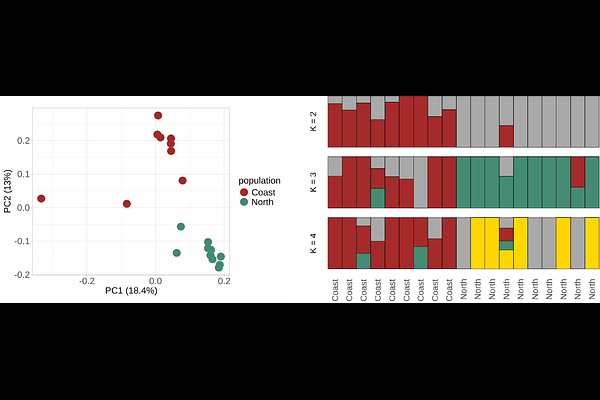Pleiotropy and facilitation of local adaptation in the silverleaf sunflower Helianthus argophyllus

Pleiotropy and facilitation of local adaptation in the silverleaf sunflower Helianthus argophyllus
Okinedo, U. E.; Moyers, B. T.
AbstractLocal adaptation drives changes in population phenotypes that confer survival or increased reproduction in certain environments. Local adaptation may be hindered or facilitated by pleiotropy, which is the control of multiple traits by a single genetic locus. In this study, we explored the connections between pleiotropy and local adaptation in the Texas endemic silverleaf sunflower, Helianthus argophyllus. Populations of H. argopyllus exhibit a bimodal life history strategy, consisting of tall, late-flowering forms and short, early-flowering forms that occur in close geographic proximity. The expression of life history traits within H. argophyllus populations is linked to local adaptation and controlled by a highly pleiotropic locus. Still, we do not know how local adaptation and pleiotropy interact at the transcriptomic level. We identified putatively locally adapted genes using whole RNA sequencing data and two selection outlier approaches. We assessed transcriptomic pleiotropy by evaluating whether allelic variants within genes control the expression of other genes (an eQTL approach) and gene co-expression network connectivity. Our results show that candidate locally adaptive genes identified by both methods are enriched for eQTL loci. Candidate genes identified through associations with environmental variables exhibit modular expression and have significantly lower network connectivity than non-adapted genes. In contrast, candidate genes identified only by controlling for population structure have significantly higher network connectivity. Our results suggest that the role of pleiotropy in local adaptation, at least at the transcriptomic level, depends on the function of the specific loci under selection.